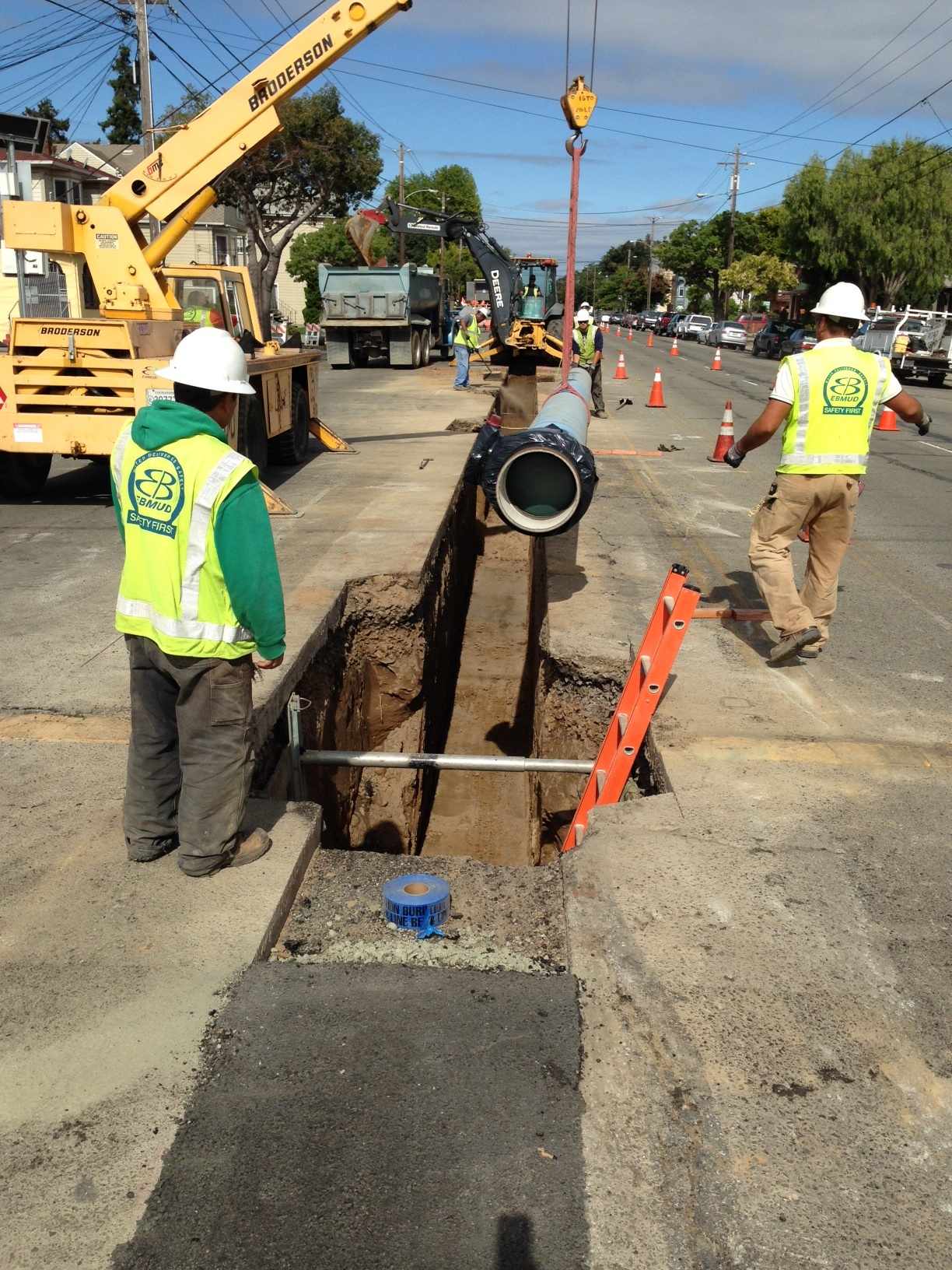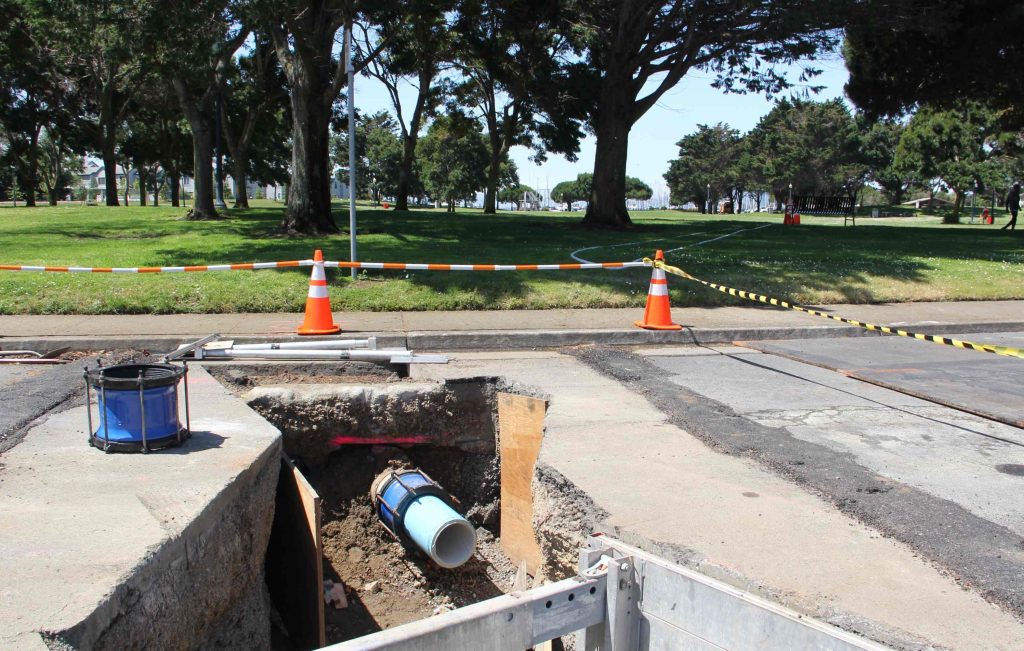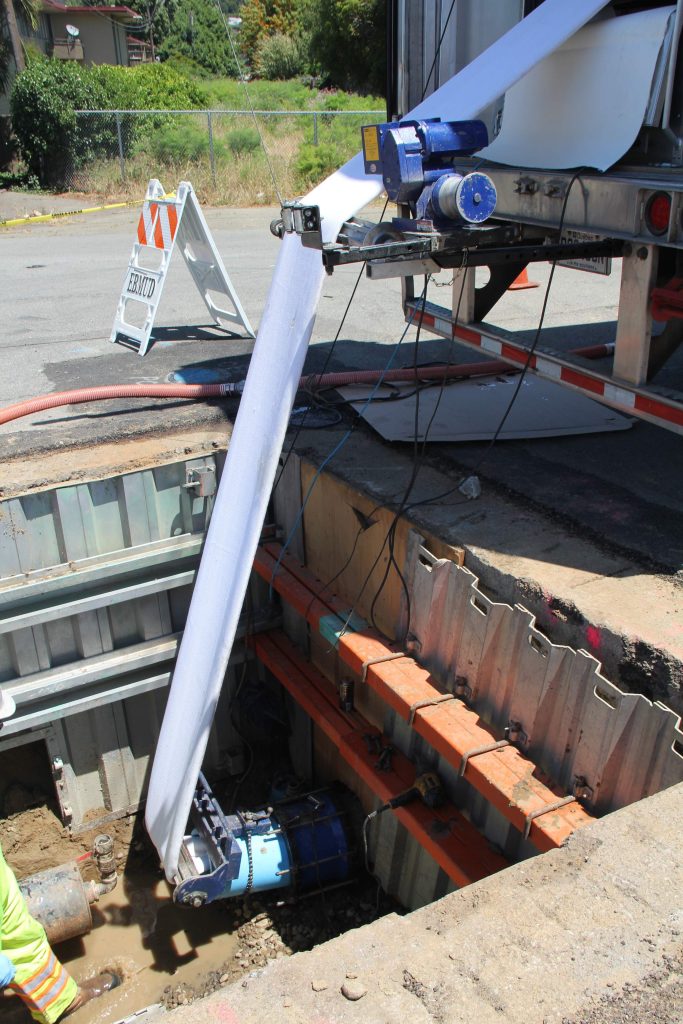By Nate Seltenrich
On average, underground water distribution pipes can last about 100 years. The East Bay Municipal Utility District (EBMUD) owns and maintains roughly 4,200 miles of them. And it replaces about ten miles per year.
At that rate it would take four centuries to replace the whole system: an approach one could charitably call unsustainable even if all the pipes were brand-new today. But parts of EBMUD’s system, cast-iron pipes inherited from forgotten, now-defunct water agencies, date to the late 1800s.
After EBMUD formed in 1923, it continued installing cast-iron pipes through the 1950s, then switched to predominately asbestos-cement for the next three decades. Newer pipes are made of plastic or steel. Today the agency’s oldest 2,400 miles of cast-iron and asbestos-cement pipes account for the vast majority of its leaks, which last year numbered 1,156, far surpassing an industry benchmark of 20 leaks per 100 miles per year.
“We have a lot of pipe. About half of it is old. And it’s leaking,” says district spokesperson Andrea Pook.

Serving 1.4 million people in Alameda and Contra Costa counties, EBMUD is far from alone in contending with aging, sometimes neglected infrastructure. Water and sewer agencies of all sizes nationwide find themselves in similar straits. Just consider Flint, Michigan, and all the attention it has drawn to the potentially dangerous lead pipes still coursing through many of our cities and towns — or the recent gas leak in Southern California. And that’s to say nothing of our nation’s crumbling roads and unsafe bridges.
“We’re very good at engineering and construction, but we sort of forget as engineers that things, once they’re in the built environment, require maintenance and someday even replacement. That’s something that I think we as a country are going to learn in the next ten years,” says Margo Schueler, construction and maintenance superintendent at EBMUD.
“We’ve got some catch-up work to do,” adds David Katzev, senior civil engineer. “We the industry, we the nation, we the society need to think differently about asset management.”
The City of Los Angeles, for one, recently accelerated its water-pipe replacement rate by two and a half times. It’s doing this largely through the use of open trenches, which is just how it sounds: dig up the street from one end of the targeted segment to the other in order to pull out the old pipe and install the new. Simply put, it’s disruptive.
EBMUD is trying to find a better approach, in part by learning from what other agencies have done well — and perhaps not so well. “We want to do it differently, be more efficient, more environmentally friendly, and more collaborative with the public,” says Schueler.

Discovering what that means is the goal of its new Pipeline Rebuild program. Officially launched this past January, the effort includes a series of short-term pilot projects designed to test alternative materials and construction techniques that may allow the agency to catch up on its backlog of deferred maintenance, and eventually prescribe a more manageable path forward.
At various locations in Richmond, San Pablo, Lafayette, and Walnut Creek, for example, EBMUD will spend the summer testing a technology known as cured-in-place pipe — specifically a product called Aqua Pipe that’s widely used in Canada and a handful of American cities. It’s essentially an interior liner that crews use to construct a new pipe within an old, failing one. Because excavation isn’t necessary, Aqua Pipe can be installed at a rate of up to 2,000 feet per day.

Later this fall, EBMUD will launch a separate pilot to evaluate another trenchless technique known as pipe-bursting, in which cast-iron pipes are broken from within by pulling a conical metal “head” through the pipe and chasing it with a new pipe. This technique is widely used for sewers, but more challenging for water lines.

A third pilot in Richmond will involve using restrained-joint connections between pipe sections, as opposed to the more common bell-and-spigot push-together fittings, which can offer additional stability during minor seismic disturbances and the opportunity to employ narrower trenches, saving time, money, and materials.
Carol Mahoney, an integrated planning manager for the Zone 7 Water Agency in Livermore, says EBMUD could also partner with cities to make street-level improvements and add green infrastructure like plantings and swales in some cases where pipeline repairs require tearing up the roadway. This piggybacking of benefits could bring additional funding opportunities, too.
Other initiatives of the Pipeline Rebuild program, which will run four years and should lay the foundation for the utility’s maintenance regime for decades to come, include GPS mapping of underground pipes, streamlining collaboration between design and construction teams, and staffing work crews more flexibly to improve efficiency.
Together, these technological and procedural improvements should help the district dig itself out of the hole in which it finds itself, once and for all. “Our point is that we need to do it now,” Pook says. “If we don’t, it will be worse later.” NS
CONTACT:
Andrea Pook
Margo Schueler
NEXT STORY: Deliquescent Summit on Ocean Climate